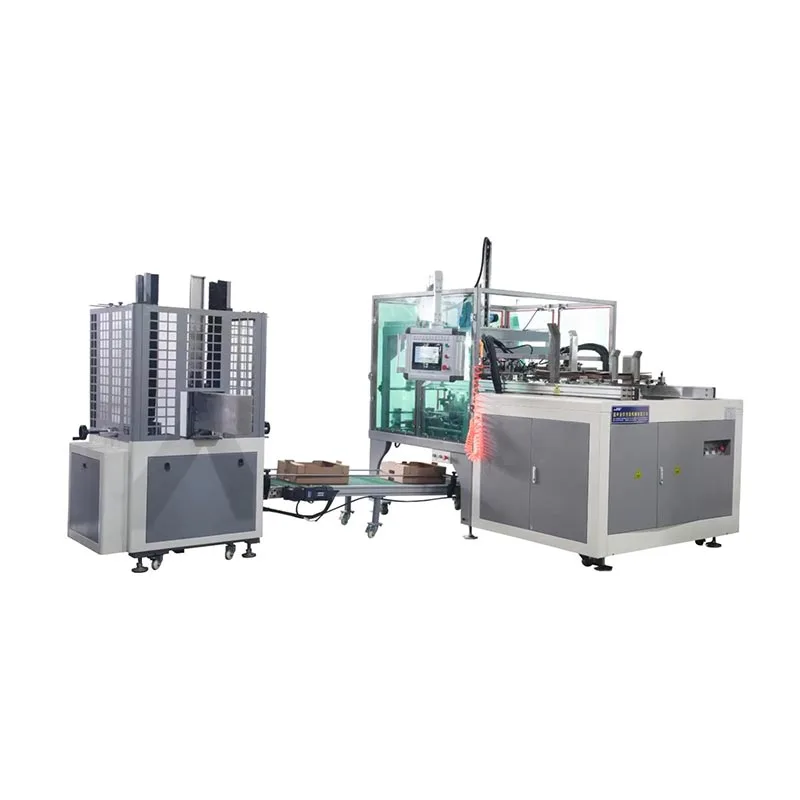Future Development Trends of Multi-functional Box Formers
2025-07-02
Abstract
The multi-functional box former is an essential machine in various industries, primarily for the production of boxes used in packaging, shipping, and storage. With growing demand for efficiency, sustainability, and versatility, the development of multi-functional box formers is evolving rapidly. This essay explores the key trends shaping their future, such as automation, customization, eco-friendly designs, and integration with Industry 4.0 technologies.
Introduction
Multi-functional box formers have been pivotal in the packaging industry, offering a blend of simplicity and functionality. These machines are designed to form boxes from flat sheets of cardboard or other materials. While their fundamental task remains unchanged, the technological landscape is shifting toward smarter, more efficient, and more adaptable machines. The future of multi-functional box formers is closely tied to advancements in automation, material science, and environmental sustainability.
1. Integration with Automation
As industries look for ways to streamline production processes, automation plays a significant role in shaping the future of multi-functional box formers. The demand for higher productivity with lower labor costs pushes manufacturers to incorporate automated features such as robotic arms, automatic feeder systems, and AI-based quality control. Automated multi-functional box formers can adjust to different box sizes, shapes, and material types with minimal human intervention, increasing operational efficiency and reducing error rates.
Moreover, automation allows for the implementation of predictive maintenance. With sensors and connected systems, manufacturers can monitor machine health in real-time, preventing unexpected breakdowns and ensuring continuous production.
2. Customization and Versatility
Customization is another crucial factor in the future development of box formers. As businesses demand more personalized packaging solutions, box formers must become more adaptable. In the future, we can expect machines capable of handling a wide variety of box designs, from standard corrugated boxes to more intricate, custom-made packaging for high-end products.
The ability to change the size, shape, and structure of boxes without the need for manual adjustments will be vital. This will be achieved through modular systems and advanced software interfaces, allowing manufacturers to modify box designs with ease.
3. Sustainable and Eco-friendly Designs
Environmental sustainability is an increasingly pressing concern for businesses worldwide. In the future, the design and operation of multi-functional box formers will be more eco-conscious, focusing on reducing waste and energy consumption. Machines will be built with energy-efficient motors and components, using advanced materials that reduce the carbon footprint of production.
Additionally, box formers will likely be designed to work with recyclable and biodegradable materials, minimizing the use of single-use plastics and promoting a circular economy. There is also the possibility of integrating waste-reducing technologies that help recycle unused or leftover materials, ensuring that the production process remains as sustainable as possible.

4. Integration with Industry
Industry 4.0 is revolutionizing manufacturing across sectors, and the packaging industry is no exception. Multi-functional box formers of the future will be fully integrated with Industry 4.0 technologies, including the Internet of Things (IoT), big data analytics, and artificial intelligence.
IoT integration will enable real-time data sharing between machines, operators, and management systems. This connectivity allows for more efficient production scheduling, inventory management, and overall operational optimization. AI-based analytics can provide actionable insights, optimizing production workflows, identifying bottlenecks, and even predicting future trends in box production.
5. Collaborative Machines and Human Interaction
Despite the increasing reliance on automation, human-machine collaboration will remain a critical aspect of box former development. Future machines will be designed with intuitive interfaces that allow operators to interact with them effortlessly. For example, touchscreen panels or augmented reality (AR) interfaces can provide real-time guidance to human operators, assisting them in setting up the machine or diagnosing problems.
Additionally, collaborative robots (cobots) will work alongside human operators to perform repetitive or physically demanding tasks. This synergy will allow for greater flexibility in production lines and ensure a higher level of productivity with improved worker safety.
6. Enhanced Precision and Speed
Precision and speed will continue to be at the forefront of multi-functional box former design. As industries demand faster production times, the future of box formers will emphasize both speed and accuracy. Advanced algorithms and improved mechanical components will enable faster cutting, folding, and gluing processes without compromising the quality of the final product.
Conclusion
The future of multi-functional box formers is bright, driven by automation, customization, sustainability, and technological integration. The adoption of Industry 4.0 technologies, alongside a greater emphasis on eco-friendly designs, will help create machines that are not only more efficient but also more adaptable and aligned with global sustainability goals. As these trends continue to evolve, multi-functional box formers will become more intelligent, precise, and versatile, meeting the ever-changing demands of the packaging industry.
As a professional manufacturer and supplier, we provide high-quality products. If you are interested in our products or have any questions, please feel free to contact us.


